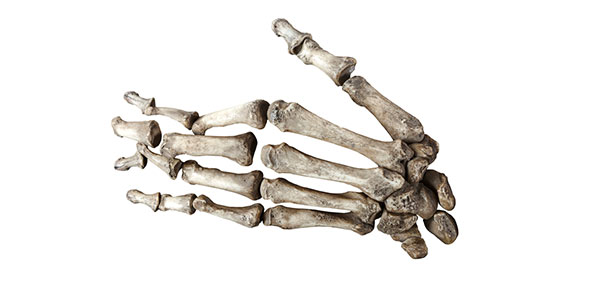Related Flashcards
Cards In This Set
| Front | Back |
|
7 myaChad (central Africa)
small 350 cc brain small face small less ape-like teethmassive brow-ridgebipedal - established by foramen magnumlived in forest |
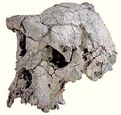 Sahelanthropus tchadensis |
|
6 myaKenya
only post-crania foundfemur- appears to show bipedal locomotionape-like hands< 4 ft talllived in forest |
 Orrorin Tugenesis(millenium man) |
|
4.4 myaAwash Valley, Ethiopiavery fragmented fossils foundsmall 350 cc brainfully bipedal1/2 arboreal> toesnonhoning dentition< 4 ft talllived in wooded setting
|
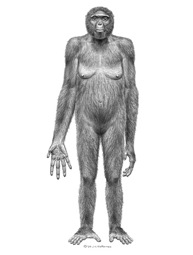 Ardipithecus Ramidus(Ardi) |
|
4 myaAwash Valley, Ethiopia
large caninesdiastema w/ rectangular teeth = primitivebipedal< 4ft talllived in wooded setting |
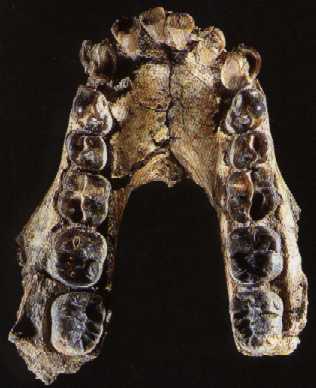 Australopithecus anamensis |
|
4.0-3.0 myaHadar, Ethiopia
Brain Size
AVERAGE of 420cc
Skull form low, flat forehead; prognathism; prominent brow ridges; flat nose; very sloping chin Jaws/Teeth relatively large incisors and canines; diastema; moderate-sized molars; U shaped jaws Distribution East Africa Dates 4.0-3 mya Culture? No developed tool culture recovered. |
 Australopihecus afarensis(Lucy) |
|
3.5 mya400 ccpossible cooperation/competition w/ afarensismore derived than afarensisskull and teeth foundflat facelived in woodlands
|
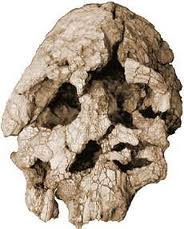 Kenyanthrupus platyops |
|
3-2 myaTaung child found by Raymond DartBiostratigraphyHeight
Still short—less than 5 feet tall
Physique Lightly built; longer arms; prob. less sexual dimorphism than afarensis Brain Size 440cc (slightly larger) Skull form Higher forehead; short face; less prominent brow ridges Jaws/Teeth Small incisors and canines (reduced compared to afarensis); larger molars; no diastema Distribution South Africa Culture: No tool use |
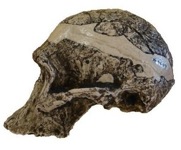 Australopithecus africanus |
|
Brain Size
410cc
Skull form Parts of the skull, particularly the back portions, are very primitive, most resembling afarensis; the largest sagittal crest in any known hominid. Jaws/Teeth massive face, jaws, and single tooth found Distribution East Africa Dates 2.5 mya Culture no toolsEvolved toward Bosei? |
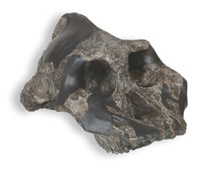 Australopithecus Aethiopicus(The Black Skull) |
|
2.5 mya470 cc brain"missing link"Gracile> 5 ft tallScavengers (scavenger hunt)tool using> tool marks on animal jaw
|
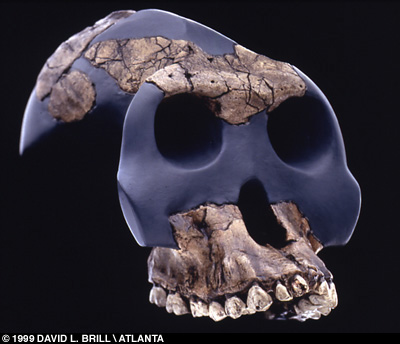 Australopithecus garhi(Surprise) |
|
2.5 mya440 cc brainteenage boy/adult femaleprimitive/derived bipedalflat fingered
|
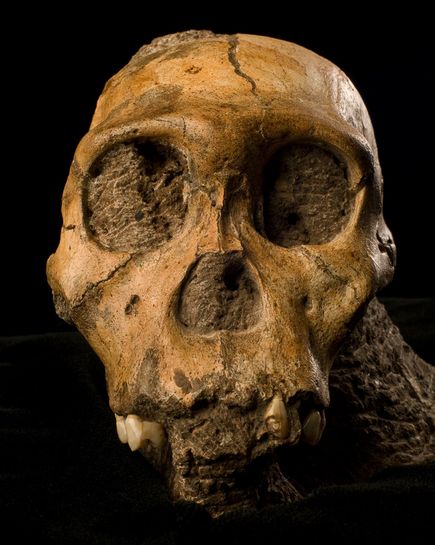 Australopithecus sediba(newest) |
|
Height
3’11”
moderate sexual dimorphism in the skull with females appearing without crests and males with Brain Size 520cc Skull form distinct sagittal crests; long, broad, flat (dish) face; moderate facial buttressing; no forehead large brow ridges Jaws/Teeth very thick jaws; small incisors and canines; large premolars; very large molars Distribution South Africa Dates 2-1 mya Vegetariansmall body/ giant faces |
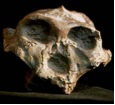 Australopithecus robustus |
|
Height
Still <5 feet
Brain Size 520cc Skull form prominent sagittal crests; very long, broad flat face; strong buttressing on the cheekbones Jaws/Teeth very thick jaws; small incisors and canines; large premolars; very large molars Distribution East Africa Dates 2.0-1.0 mya |
Australopithecus Boisei
|
|
Height <5’
Physique relatively
long arms to legs. May have even retained a tree-climbing ability
Brain Size 630cc
Skull presence of a
supraorbital torus/brow ridge, more rounded occipital, less projecting jaws, small
back teeth.
Distribution Mostly
East Africa (also in SA)
Dates 2.4-1.5mya Culture: Oldowan tool use for bone marrow
|
Homo habilis(Handy man)
|
|
Height 5’6”
Physique - robust, but human-like skeleton; the
robusticity of the lower limbs with very strong muscle markings means the legs
were subject to extraordinary stress during exertion
Brain Size
900 cc average
Skull large
supraorbital torus, receding frontal, pronounced nuchal torus, sloping chin,
when viewed from the back the skull is pentagonal in shape (widest at the
base), change in position of the nasal aperture with clearly projecting nasal bones,
presence of a sagittal keel (NOT CREST!).
Jaws/Teeth Incisors
large, often shoveled
Dates 1.9mya-200,000
ya
|
Homo erectus
|
|
350,000 yBP
|
Archaic Homo sapiens
|





